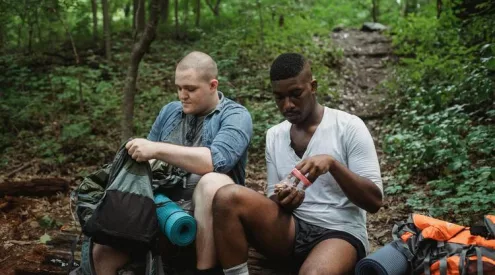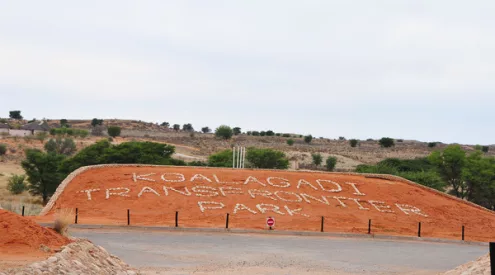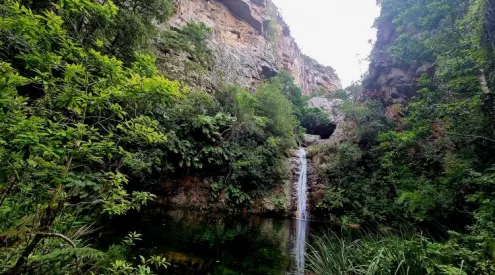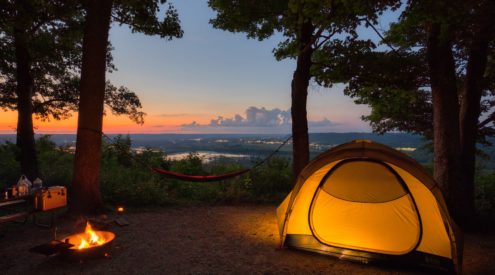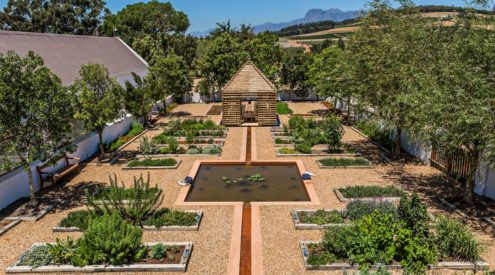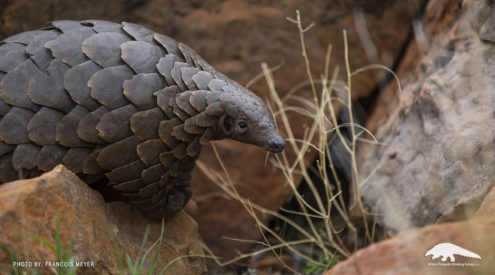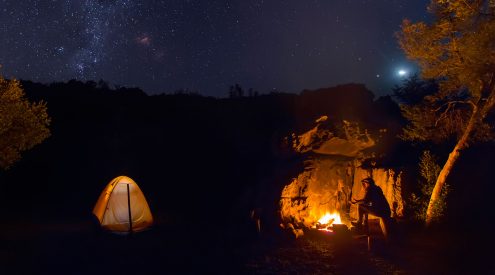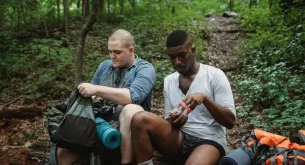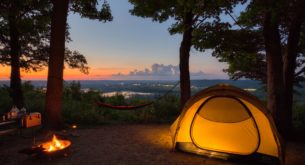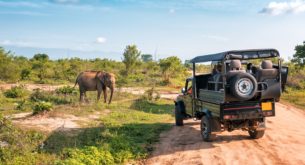As we move into the hot summer months in Africa, some of the driest, most thirsty regions of the southern continent are preparing for the quenching rains and the growth of new grass. As December approaches in the Central Kalahari, a desert contrast is created. Short, green grasses sweeten the earth and a lush softness spreads over the rolling landscape, decorating bare branches with vibrant leaves and filling crystallised pans with liquid life. This phenomenal celebration of nature is known as the Green Season, and Botswana becomes home to the world’s only Green Desert.
This is also the season in which families of springbok, hartebeest, zebra and gemsbok grow in number. Big-bellied females give birth to their young in the comforting environment created by lusciously grown shrubbery and topped-up watering holes. New-fangled grass speckles green the sandy surfaces and offers sustenance to the bleary-eyed fawns who have begun their lives on Earth. In their millions, these ungulates move in from their summertime hideouts; herds migrating from the Okavango Delta, which has loyally nourished the populace while winter’s desiccation starved the Kalahari Desert of sufficient food and water.
The summer migration is a sight quite contrary to the desert’s stark winter beauty. An astounding number of antelope and their young journey across the expanse of the largest desert in the world, while it boasts blooming plains as if it were not a desert at all. A spectacular array of wildlife calls the Green Desert home during the African summer months, and the newness of life is evident in the strokes of green that colour the branches, and in the furry, fumbling activity of newborn animals.
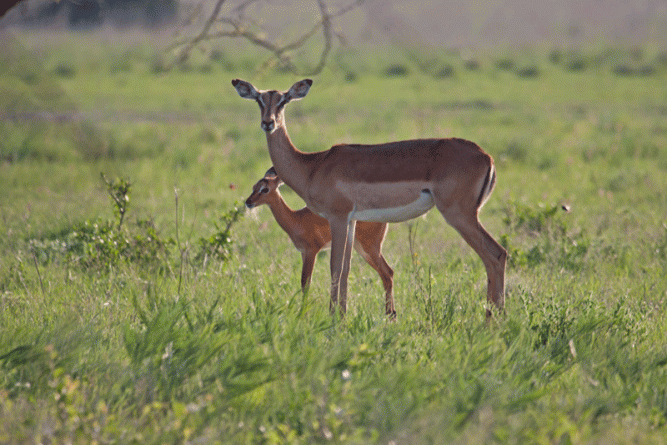
Impala and fawn © Rory Bruins, Central Kalahari Game Reserve
The Wildebeest population of Botswana has dropped by more than 90% in the past twenty years since fences were erected across Botswana. Botswana used to host Africa’s second largest wildebeest migration where almost 500 000 animals migrated between the Okavango Delta wetland and the Central Kalahari after the summer rains have lifted the drought. An estimated 80 000 wildebeest died of dehydration in 1983 when it came time for them to move away from the drought-stricken Kalahari Desert and they were confronted with fences that blocked their way to water.
Wildebeest calves are probably the most precocious of any ungulate. Newborns are able to stand between 3 and 7 minutes after birth and after their first suckle, are ushered off to join the nursery herd consisting of mothers and young. Also unlike many ungulates, the birth of a wildebeest calf does not happen in seclusion, and instead occurs as a group performance whereby dozens of calves are ‘dropped’ between dawn and noon in the presence of the herd.
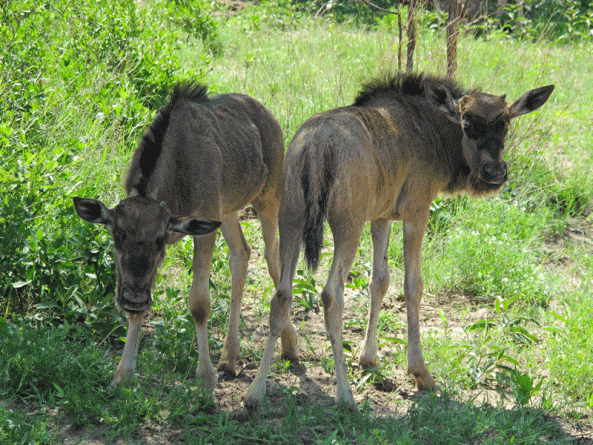
A pair of wildebeest calves in the CKGR © Rory Bruins
Warthogs live in groups called sounders. They are identified by their characteristically erect tails, which shoot up into the air as they break into run. Their tufted tails act as ‘follow-me’ signs that stick up with the tall grass and enable their young to keep track of their parents. Once males have competed for and won over a female, a litter of usually 3-4 altricial piglets are born after a gestation period of 150 to 175 days. For the first 6 weeks of their lives, the piglets are sheltered in a grass-lined burrow, which has been carefully constructed to contain ‘bunk-beds’ that keep the piglets off the ground. If there is no raised shelf for the young to sleep on, they will settle on the sow’s back for safety from floods. They are extremely sensitive to temperature change and need to be comforted in a moderated environment. When sounders are spotted with more than 2-3 piglets, it can be assumed that some of the young have been adopted after being orphaned or abandoned.
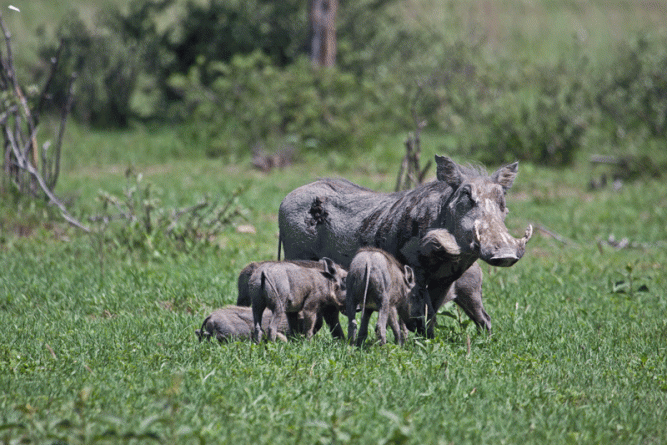
A mother warthog and her litter © Rory Bruins
The Plains zebra, also known as the Burchell’s zebra, is seen in huge numbers during the rainy season when they migrate alongside wildebeest and Thomson’s gazelle in East Africa’s Great Annual Migration. Similarly, in December zebras arrive in the Central Kalahari in their masses, seeking new food and a safe place for females to give birth to their single foals after having carried them for a whole year. Such a long gestation period means that these fuzzy, striped foals are on their feet less than an hour of being born and are grazing with the herd within the first week of life. By 7 – 11 months the foal is weaned and approaches puberty between 16 and 22 months.
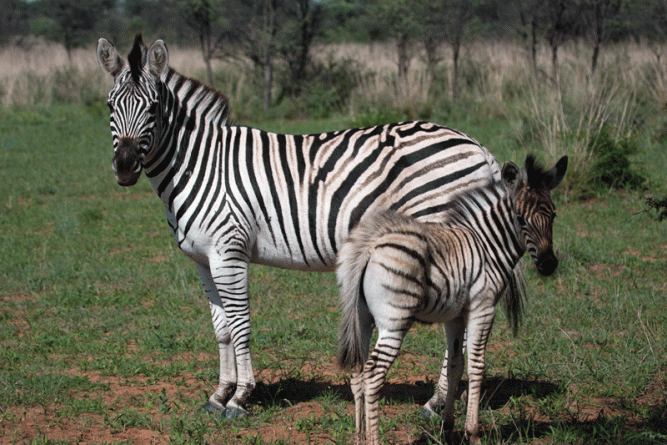
A Plains zebra and calf in the CKGR © Rory Bruins
Ostrich parents share the responsibility for the exceptionally large eggs that are laid in a shallow, communal nest in the sand. The dominant female can identify her eggs and will discard any that don’t belong to her before incubating. The pale greyish feathers of the female camouflage her during the day while she sits on the eggs, whereas the males with black feathers are better camouflaged at night, at which time they take over the duty of incubation. The shells of the eggs are 2mm thick and serves an important service in the chick’s first hours of life. The struggling action of the hatchling trying to break free from its shell draws a yolk sac onto its body, which is then fed on for the first day of its life. Without the absorption of this yolk, the newborn ostrich will not survive. From the time of birth (after 9 weeks of incubation), ostrich chicks live a highly threatened life and only about 15% of the hatchlings survive their first year.
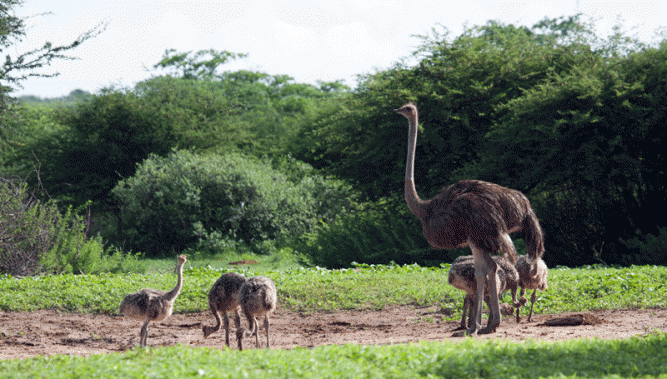
A female ostrich with her chicklets © Rory Bruins
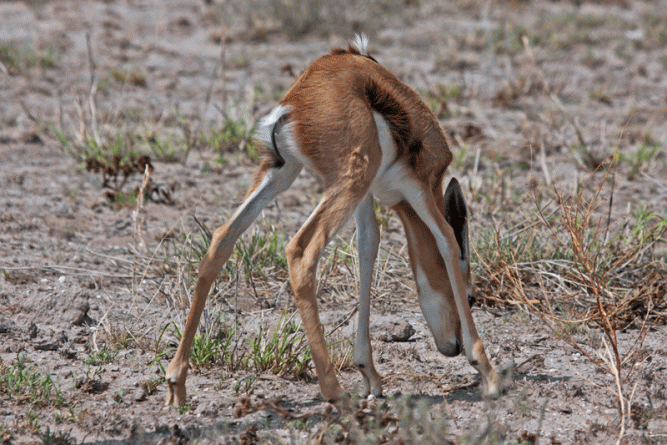
A newborn springbok calf finds its footing © Rory Bruins
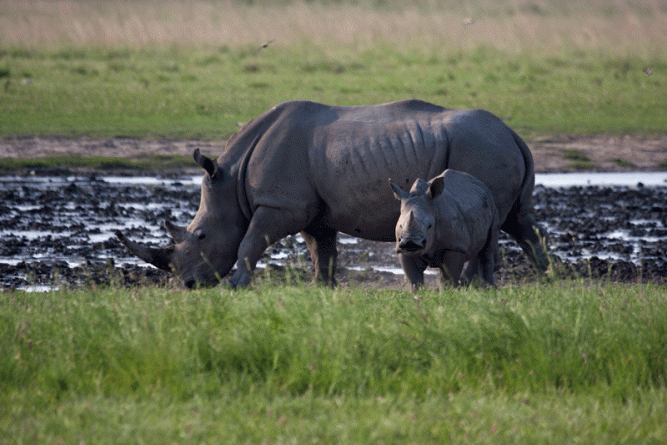
A white rhino and her calf grazing at a mud wallow after the rains in the CKGR © Rory Bruins
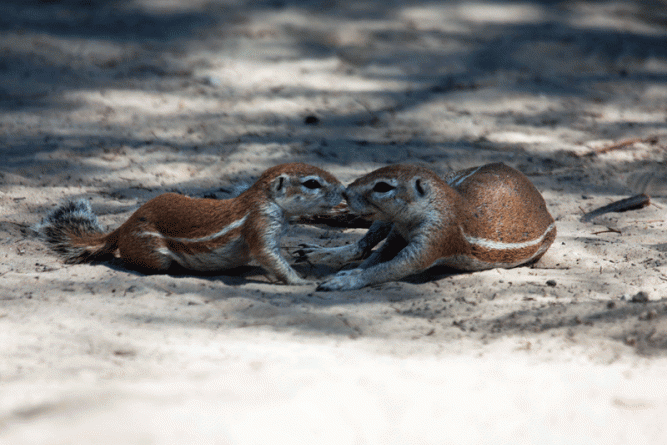
A Cape ground squirrel and her young mid-grooming © Rory Bruins
This post is brought to you by Sun Destinations, who handle the marketing and reservations for a selection of Africa’s Hidden Secrets. Check out Sun Destinations on Google+ and Sun Safaris on Facebook, Twitter, and Pinterest.


